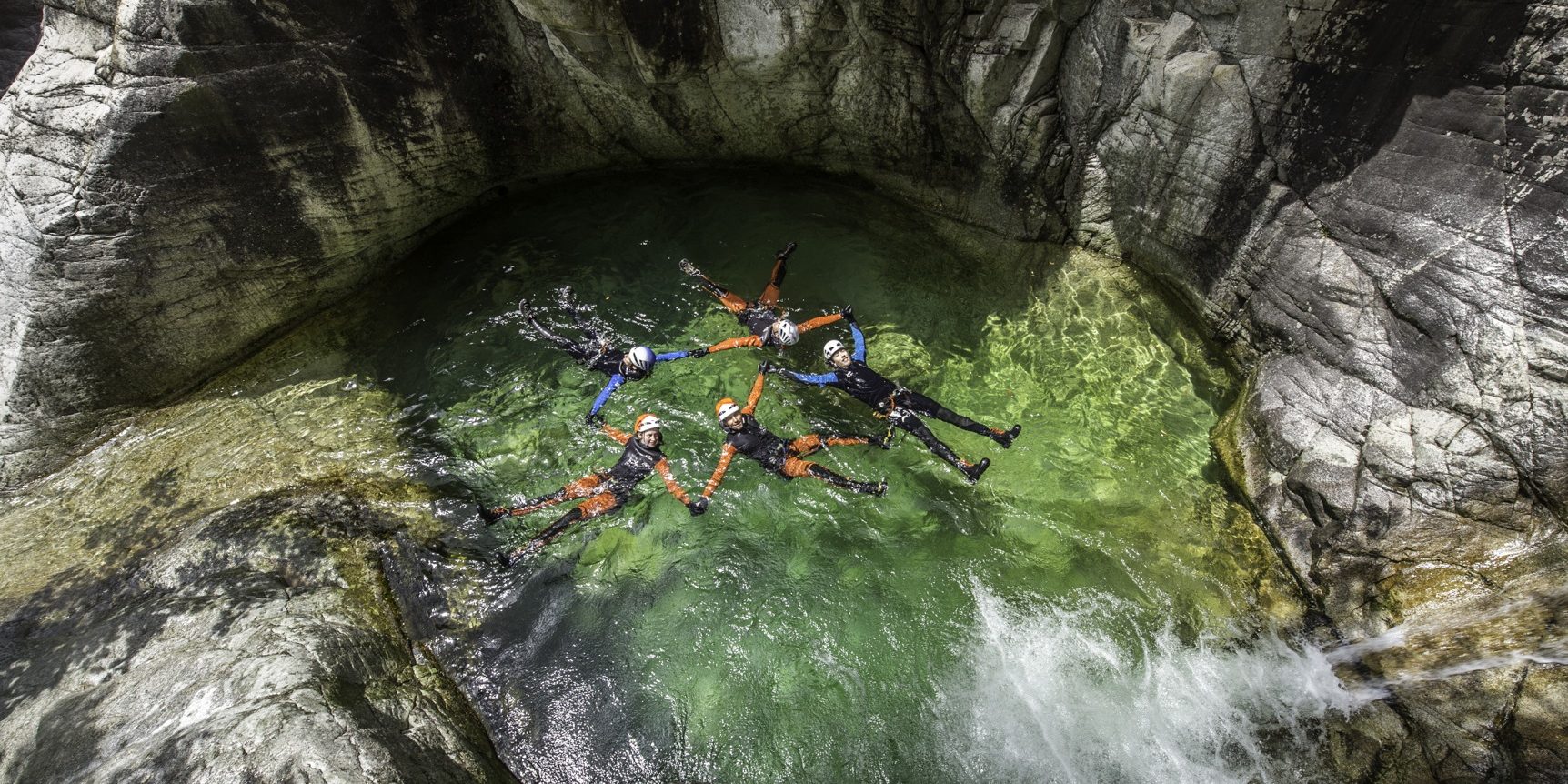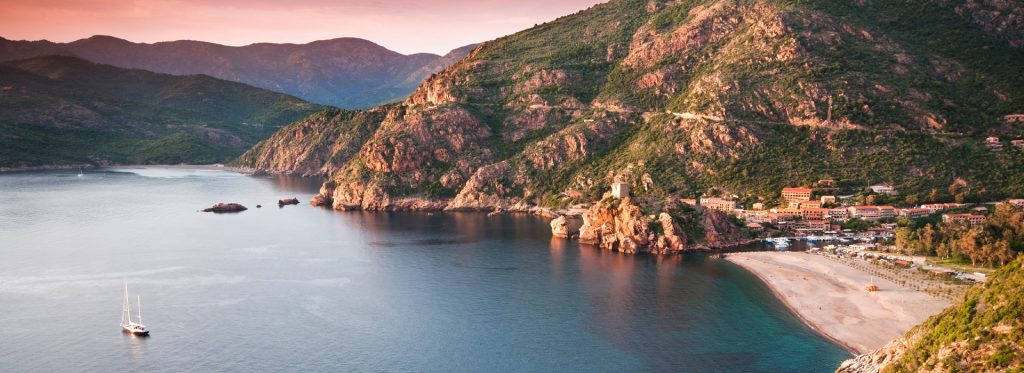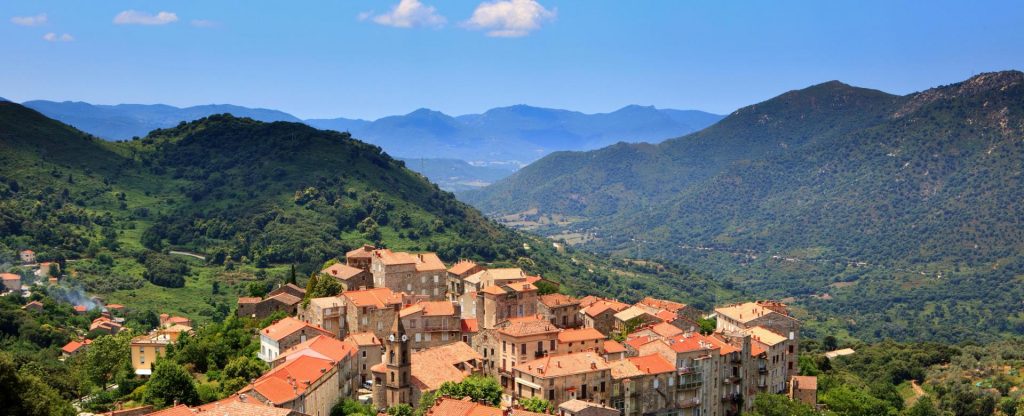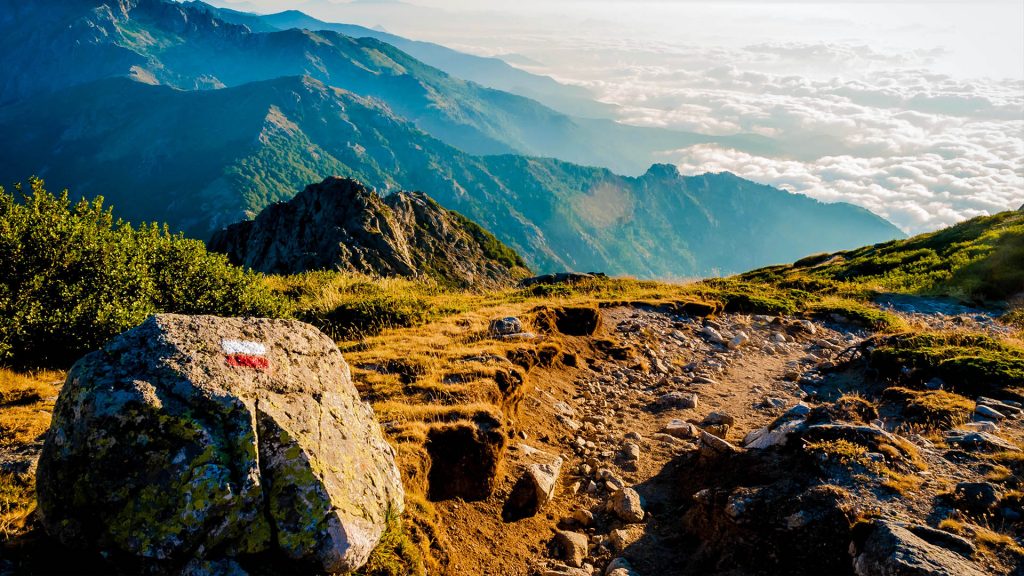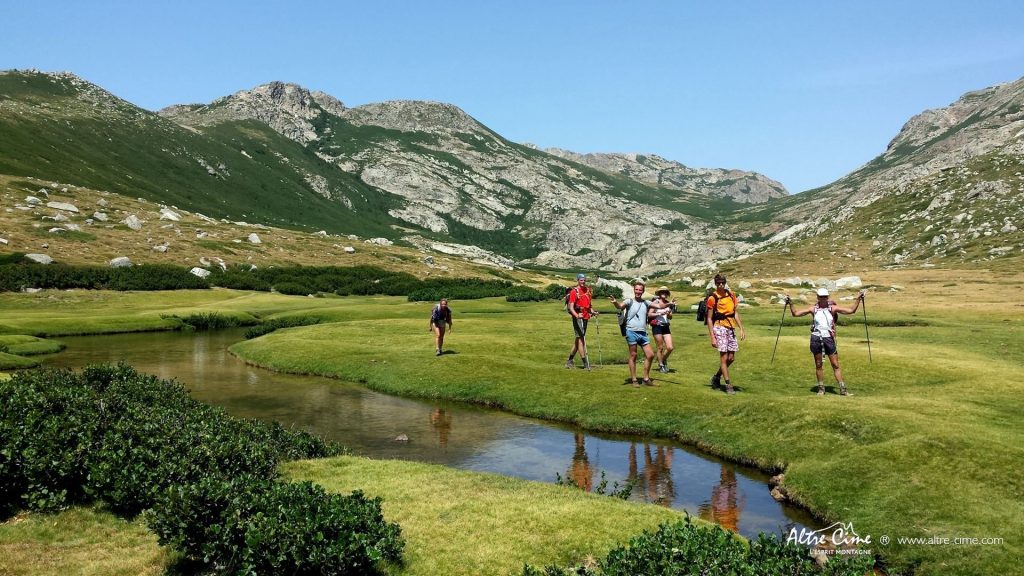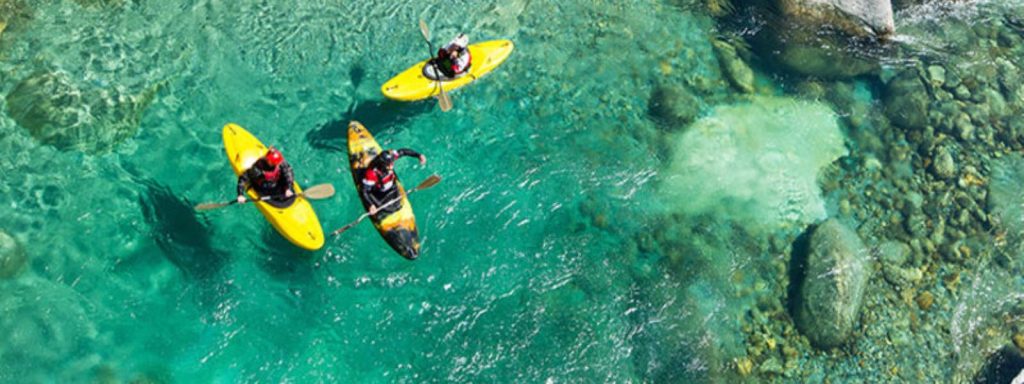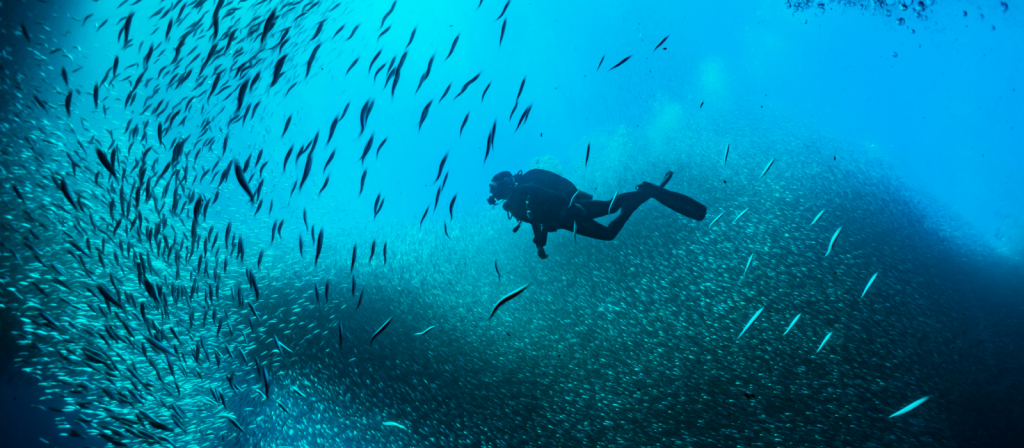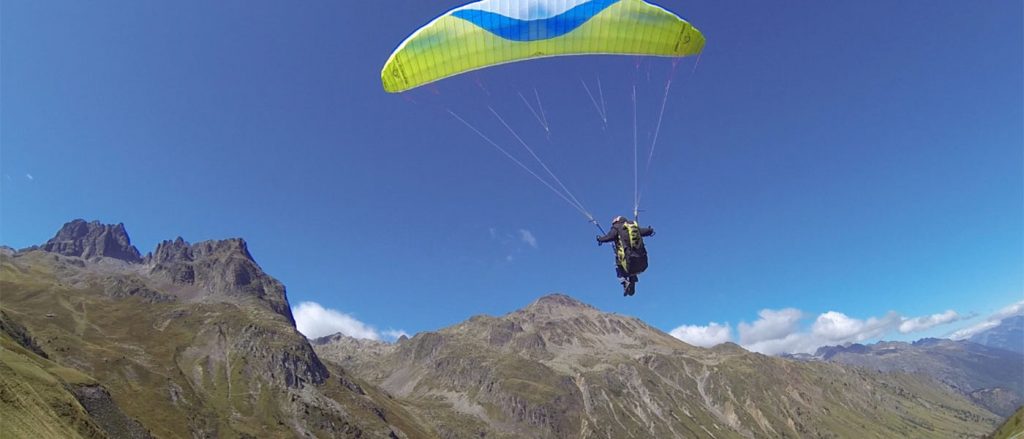Hiking the famous GR20 in Corsica, said to be the most challenging trekking path in France, could be considered as the first trip I ever took in my life. I was only 20 years old or so, and leaving continental France to reach the well named “Island of Beauty” with a few friends, using trains, ferry, taxis or even hitchhiking sometimes (this was long before Uber existed…) was really an adventure with a capital “A” for us! This memorable two weeks of trekking made me fall in love with Corsica, and gave me a glimpse of the incredible richesse of the outdoor environment.
Corsica is where the mountains truly meet the sea, and there are very few other places in the world where you can have such a concentration of outdoor spots and find so many activities to practice. Check out why Corsica is a paradise for outdoor travelers in this article.
With currently more than 750 hiking routes all around Corsica there are plenty of options for trekking addicts. Among these numerous routes, most are accessible to anyone, including families, some being just a quick hike of a couple of hours. But there are also several long-distance trails, which are often the most appealing for travelers who are trekking enthusiasts and want to challenge themselves on a multi-day route.
The most famous one (and the toughest) is the afore mentioned 180km long GR20 that traverses Corsica diagonally from north to south. Other renowned and challenging routes are the five to ten day treks of Mare e Monti (Sea and Mountains) and Mare a Mare (Coast to Coast).
- Mare a Mare North is a long distance trail that crosses Corsica at its widest part from the village of Moriani on the eastern coast to the town of Cargese in the west. With the highest point in 1478 m the trail can be walked from March to November and takes 7 to 10 days. Mare a Mare Centre is a 7-day hike from Ghisonacia on the eastern coast through the heart of Corsica to Porticio on the western coast near Ajaccio. The trail is passable from April to November, each of its seven stages take 3 to 7 hours, and its highest point is at 1525 m.
- Mare a Mare South is the shortest of all the Mare a Mare (Coast to Coast) routes. It’s an easy 5-day hike through the Alta Rocca region from Porto-Vecchio in the Southeast to Propriano in the Southwest.
- Tra Mare e Monti North is an easier, 9 to 11-day long trail that can be walked in any season of the year. The route starts in Calenzana and goes South along the coast to Cargese. Tra Mare e Monti South goes between bays of two seaside resorts Propriano and Porticio, and connects another two long-distance trails, the Mare a Mare South and the Mare a Mare Centre.
Apart from these multi region routes, the best places for hiking are in the central parts around Corte, where there are the highest Corsican peaks and many glacier lakes, Cap Corse (the peninsula at the north of the island) and along the western coast. Just a few places of the most beautiful ones you shouldn’t miss are:
- Agriates desert and especially its coastline with the most beautiful Corsican beaches — Plage de Saleccia and Plage du Lotto. The Agriates desert is located in the Nebbio region between Saint-Florent and the Ostricone river and is accessible via beautiful coastal path Sentier du Littoral.
- Restonica Valley rising from Corte along the Restonica river to the beautiful glacier lakes Melo and Capitello. A little further into the mountains there is another famous lake — Lac de Nino and the two highest Corsican peaks, Monte Cinto (2706 m) and Monte Rotondo (2625 m).
- Calanques de Piana — red granite cliffs carved into bizarre shapes with up to 300m high towers, located in the Gulf of Porto between Calvi and Ajaccio.
- Col de Bavella (Bavella Pass) in the south of Corsica is a beautiful landscape framed by the sharp peaks of Aiguilles de Bavella.
- Bonifacio and its citadel on the top of spectacular cliffs at the southernmost tip of Corsica.
- Cap Corse, the north most point of the island hasit’s a coastline full of old Genoese towers, as well as mountains that offer views of the sea in three out of four directions. Try either a day-hike along Sentier des Douaniers or shorter walk to Monte Stello.
And if vacation and outdoor are synonym of mountains for you, find below the list of the six -mosticonic and challenging summits of the Island:
- Monte Grosso: It is one of the peaks of Monte Cinto massif and it overlooks the landscape that you can admire from Calvi, on the northern coast of Corsica. Monte Grosso can be reached from the small villages of Calenzana, Zilia and Montegrosso.
- Monte Cinto: 2706 meters above sea level, this is the highest mountain in Corsica. It is located in the northwestern part of the island, it can be reached from the small towns of Asco and Calacuccia. The main nearby tourist port is Calvi.
- Monte d’Oro: It is the fifth mountain in Corsica. You can see it from Bocca di Vizzavona, on the road between Bastia and Ajaccio. It can be reached from Vizzavona, along the GR20, one of the most famous trails to discover Corsica by foot.
- Paglia Orba: It is one of the most famous mountains of Corsica. Its nicknames are “Corsican Matterhorn” and “Queen of Corsican mountains”. It is an isolated massif that rises on the west coast. It can be reached from the village of Albertacce.
- Monte Renoso: Between the hills of Vizzavona and Verde, highest peak of Renoso massif, it is located near the town of Ghisoni. From monte Renoso you can see several lakes, such as Bastani, Rina and Nielucci.
- Monte Rotondo: It is the second highest Corsican mountain. It is located in the area of Haute-Corse and it is the highest peak of the homonymous massif, which includes other peaks.
What makes Corsica so special for MTB? Surely the unique characteristics of its territory. An inland area which immediately becomes rugged and mountainous, drawing wild and uncontaminated landscapes, sometimes burned by the sun or surrounded by lush forests, which will bring joy to all MTB fans.
Explore Corsica by bike and discover the most unusual trails, all levels combined, accompanied or not. You can rent electric bikes from Appebike or from the many rental companies across the island. If you wish, you can choose outings accompanied by qualified instructors, such as to Bavella Bike Park at the heart of the Alta Rocca.
Discover the GT20: The Grande Traversée de Corse by electric bike! If you enjoy long bike rides, why not go a step further and spend the whole day on an electric bike, crossing Corsica from north to south in complete freedom? A demanding itinerary revealing the untamed nature of the island of beauty. A unique route that honorsthe beauty and diversity of these landscapes between turquoise waters and snow-capped peaks. A challenging itinerary but accessible to all thanks to the assistance of the electrical power!
Here are the five main regions to practice Mountain Biking: here there are several trails that cross the peaks and ridges and overlook the sea. The paths are well marked and there are various difficulties, so as to meet both the beginner and the more experienced riders always looking for new adventures and emotions.
- The so-called “Corsican finger” (the peninsula which is located at the North of the island)
- Corte in the center of Corsica
- Between Porto Vecchio and Bonifacio (along the southern East coast of Corsica)
- Ponte Leccia (in the heart of northern Corsica)
- Ostriconi (not far from the splendid sea of the northern coast)
Are you an experienced rider with years of galloping under your belt, or a beginner simply wanting to explore Corsica’s beauty on horseback? The island has many equestrian centres that offer all the best equestrian rides accompanied by passionate english-speaking guides.
This is also an activity where you can appreciate the “mountain to the sea” side of Corsica. Whether you take some portions of the famous and described above GR20 with your steed.
Corsica is full of luminous gorges, delightful rock slides and breathtaking cliff jumps. Canyoning routes in Corsica are truly some of the best on the planet. We have hand-picked the best canyon from each of the three regions in Corsica. Including one canyon close to Bastia in the northern part of the island. You can find another in the centre, near Ajaccio and the last a bit farther south in the region of Bavella.
La Richiusa canyon
First up is La Richiusa Canyon, near Ajaccio. This is considered one of the most famous canyons in all of Corsica. They are very accessible, requiring only a short 45-minute walk to the entry point, and a 15-minute walk back out. Here beginners can discover all the amazing activities that canyoning in Corsica offers.
This canyoning trail in the Migliarella mountain range lasts over 4 hours. Jumps are exhilarating and reach up to 8-metres high, but are always optional and offer alternate routes. Abseiling features are up to a maximum of 15 metres here and therefore are not too scary for beginners. Your qualified guide will always be there to instruct you. Overall, this is a great spot to discover canyoning in a beautiful mountain setting.
Ponte Leccia
Next on the list is Ponte Leccia. What’s amazing about this spot is that there are no less than 5 canyoning routes to choose from based on your skill level!
These canyons here are especially unpopulated to make you feel as if you’re alone and one with nature.
The canyoning options range from beginner up to advanced. On beginner courses all of the obstacles are optional. Advanced options last all the way up to a full-day, with challenging slides, jumps and 50-metre abseils.
Purcaraccia canyon
Last on the list of the top-three canyoning spots in Corsica is Purcaraccia Canyon. This canyon is in southern Corsica, near Solenzara and Zonza village, and around the corner from the famous Aiguilles de Bavella. Canyoning adventures in Purcaraccia, Corsica are perfect for beginners for several reasons. These canyons are made of giant granite slabs of rock towering 730 metres up to their peak. This kind of rock is ideal for canyoning because it creates fantastic waterslides and beautiful pools. Firstly, Purcaraccia canyon only requires a 30-minute walk to arrive at the starting point. Secondly, the beginner descent lasts only about 2.5 hours- just the right duration for beginners. Lastly, there is no return walk required. Combined with a 9-metre waterfall, this is the perfect place to enjoy thrilling moments with your friends and family!
Probably like no other coastal destination in France (except maybe the Calanques of Cassis, close to Marseille), Corsica is quite simply a sea kayaking paradise. The island of beauty invites you to marvel at its breath-taking coastlines. The three most famous places to paddle are probably: the Scandola Nature Reserve, classified by UNESCO, the Piana inlets and the Agriates desert, but other special spots exist too.
Corsicas west coast is natures wonderland. Take your time to discover all of the beauty of the coastline. Cote Sauvage is the coast between St Florent and Calvi. Partly it is rocky and it can be very difficult to get ashore. It is a nature reserve without human inhabitants. Bonifacio is built on the cliffs overlooking Sardinia. The coast line has beautiful rock formations and the neighborhood of Bonifacio is very abandoned. But the Bay of Porto is the crown of Corsica (it is listed also as a Nature World Heritage by the UNESCO). When you are lucky, the weather permits slow paddling along the beautiful rock formations and you can enter the numerous caves. Amazing!
All trips should be accompanied by a certificated sea kayaking instructor.
Corsica is undoubtedly one of the most beautiful islands and one of the best diving destinations in all of Europe. And once again, as you can see, Corsica is a paradise for outdoor travelers. The numerous nature reserves such as Finocchiarola, Tre Padule de Suartone, Cerbicale, Les bouches de Bonifacio, and the famous UNESCO reserve of Scandola, work to preserve underwater life. Diving in Corsica means, above all, discovering impressive rock structures, visiting exceptional wrecks and diving with grouper fish, and moray eels.. Only experienced divers should try out the wreck diving that is found all around the island.
Please find below a selection of our top-five diving spots in Corsica:
La Revellata / Type : Classic dive / Difficulty : PADI Open water diver
At the edge of the Scandola nature reserve, the scuba diving spot is a wide canyon evolving between 15 and 35 meters deep. You will be able to explore the many small caves and tunnels that will punctuate your exploration. You will meet groupers, moray eels, scorpion fish, sea bass, beautiful tuna, mostelles and lobsters. If you are lucky, you will encounter several magnificent rays such as devil ray, mobula, eagle or stingray. You will also find the imposing brains of Neptune, immense hard corals as well as the usual flora of the Mediterranean.
Alcione C / Type : Wreck Dive / Difficulty : PADI Advanced diver
The wreck lies 35 meters deep on the sand. The highest part of the wreck is 24 meters deep and therefore requires an advanced level to access it. Although the carcass has been suffering a lot through the years, the experience is worth a dive. This wreck is gigantic and is often considered as the best dive wreck in Corsica. The latter is very popular among photographers who greatly appreciate its universe and its special atmosphere. Finally, you should know that the wreck is already well inhabited and you should cross corbs and large groupers.
Punta Locca / Type: Cave diving / Difficulty: Accessible at any level / FFESSM Level 3 or PADI Advanced Diver to see everything.
The spot is located near the southern part of the beach of Liamone and offers an impressive relief composed of vertiginous fall, drop off, tunnels, caves, breaks, vaults for a magnificent vertical dive. These asperities serve as habitat for most endemic Mediterranean species such as corbs, musels, dentists, scorpionfish, nudibranchs, sea breams, anthias … The site is accessible to every levels and some centers go there for try dive and diving baptisms but it will take a level 3 or a PADI Advance with specialty deep to explore the entirety of this exceptional site.
Cirques de Marifaja / Type: Diving / Difficulty: Accessible at any level / FFESSM Level 2 or PADI Advanced diver for the big circus.
This dive site of Corsica stands out thanks to its impressive reliefs and wide rock walls of nearly 15 meters encircling magnificent little circuses of sand. You will come across stingrays, morays, grouper and many other species of Mediterranean. PADI Advance divers will have the chance to go down to 26 meters to discover a magnificent and particularly wide circus jealously guarding the secret of its magnificent Mediterranean mother-of-pearl.
Merouville / Type: Classic Dive / Difficulty: Open water Diver
The Peelu shoal, commonly called merouville, is located in the natural reserve of the Lavezzi Islands. The peculiarity of this diving spot in Corsica lies in the large family of thirty groupers who inhabit its three large rocky plateaus, between 16 meters and 30 meters deep. The latter are accustomed to the presence of the divers and they sometimes allow divers to caress them. The site is also inhabited by the usual fauna of the Mediterranean as well as barracudas, octopuses and stingrays.
Though Corsica is very mountainous, the profile of the mountains and the wind conditions do not allow as many opportunities of paragliding as in the French Alps or in the Pyrenees. The flying is concentrated in the north and west, around the towns of Bastia and Ajaccio, with a couple of soaring sites dotted along the east coast. Vero, in the centre of the island, is one of the biggest, with good thermal conditions and XC flying. The island XC record is about 100km. But in summer the wind can be strong and the conditions not adapted for beginners.
Most of the sites in Corsica are sensitive and have been carefully negotiated by the local clubs, so make friends before you fly.
If you plan to make a trip in Corsica, don’t miss our suggestions of itineraries and my latest post on Corte and the central Corsica. This is another proof of my unwavering love for the Island of Beauty!


